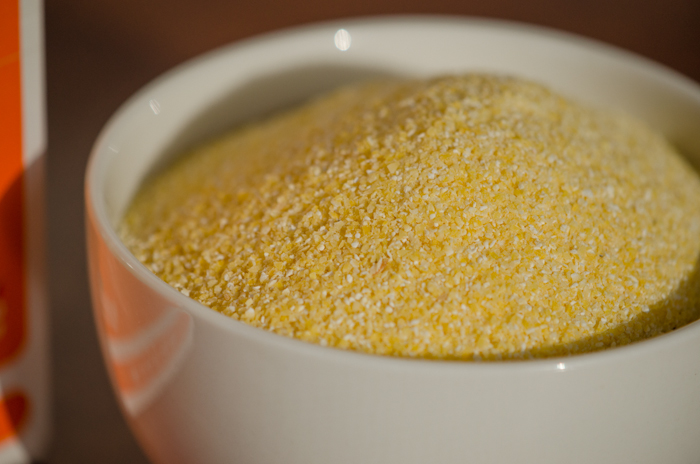Pizza and pasta are considered by many to be the ‘staple’ starches in the standard Italian diet, but polenta in northern Italy is just as common. Northern Italians literally survived on this staple for hundreds of years.

In ancient times, polenta was first made with wild grains from primitive wheats including faro, millet, spelt, and chickpeas. These would be mixed with water to form a paste, then cooked on a hot stone. This whole grain polenta would have had a very coarse texture. In time, milling techniques were improved, and flour “farina” was used. “Pulmentum” was a basic source of nutrition to the Roman soldiers, and at this time was actually preferred over bread for its flavor and simplicity by the soldiers and lower classes alike.
Polenta as such continued to be prepared in a similar manner for several hundred years, until the Saracens introduced buckwheat, or ‘grana saraceno’ to Italy. This became the most popular grain used for polenta (and is still used today in Tuscany and northern Italy) until the 15th or 16th century, when corn, or maize, was introduced. At this time, Spanish and Portuguese ships traveling from the Caribbean to Europe would bury their treasures and gold in flint corn to conceal it from marauding pirates.

This new crop, maize, was very easy to cultivate in the lands of Northern Italy, and quickly replaced buckwheat and the other grains. The yield of maize compared to other cereals was much better, making it much more profitable a crop for landowners. Unfortunately, the nutritional value of maize is not as high as the grains it replaced, as it continued to act as a staple in the cuisine of the lower classes in Northern Italy. Today, maize is still the predominate grain used in polenta.
Vicenza is known for the production of the Marano variety of corn, which is considered by many in the Veneto region as the best corn flour for the preparation of polenta. In 1890, a local farmer, Antonio Fioretti, crossed two varieties of local corn, “nostrano” and “pignoletto d’oro”, in an eventually successful attempt to produce a strain that possessed the yield of the former with the quality of the latter. Strains with higher yields have since been developed, but the population continues to return to the Marano corn as its preferred polenta grain.

Marano, or Maranello corn, originated from Marano Vicentino. Marano corn is produced exclusively in the Leogra valley and the foothills of the Province of Vicenza, and the flour itself must be processed in Marano Vicentino or in the foothills of northern Vicenza, using only this Marano Vicentino variety. This variety is modest in size, with a rather short stalk with a high yield, producing many ears per stalk. It can withstand intense cultivation, and has a short growing cycle, making it a good option for crop rotation. The flour produced from it is very rich in gluten, producing a polenta with a good amount of elasticity, and an intense golden color with brown flecks.
The origin of this flour is certified by the “Consortium of the Land of Palladio”, and the Consortium for the Protection of Marano Corn has been founded to insure the continuing quality of the product.


